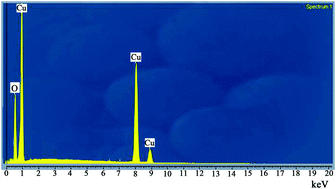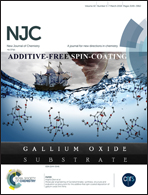An amplified platform nanostructure sensor for the analysis of epirubicin in the presence of topotecan as two important chemotherapy drugs for breast cancer therapy†
Abstract
Epirubicin (EB) and topotecan (TP) are two major anticancer drugs that are used in breast cancer therapy with many side effects. In this research, we introduce a carbon paste electrode, modified with 1-butylpyridinium hexafluorophosphate and CuO nanoparticles (CPE/1-BPr/CuO-NPs), as an amplified sensor for the electrochemical determination of EB. The electrochemical behavior of EB was initially studied on the surface of CPE/1-BPr/CuO-NPs, CPE/CuO-NPs, CPE/1-BPr, and on bare carbon paste electrodes. The CPE/1-BPr/CuO-NPs showed two separate oxidation signals with a potential of 628 mV and 935 mV in the oxidation of EB and TP, respectively; these potentials are sufficient for determining them simultaneously. The linear response range was found to be 0.03 to 800 μM (R2 = 0.9972) and 0.7 to 800 μM (R2 = 0.9984) for the EB and TP concentrations, with limits of detection (LODs) of 0.008 μM and 0.3 μM, respectively. Finally, the concentrations of EB and TP were successfully measured by CPE/1-BPr/CuO-NPs as a voltammetric sensor in real samples.



 Please wait while we load your content...
Please wait while we load your content...